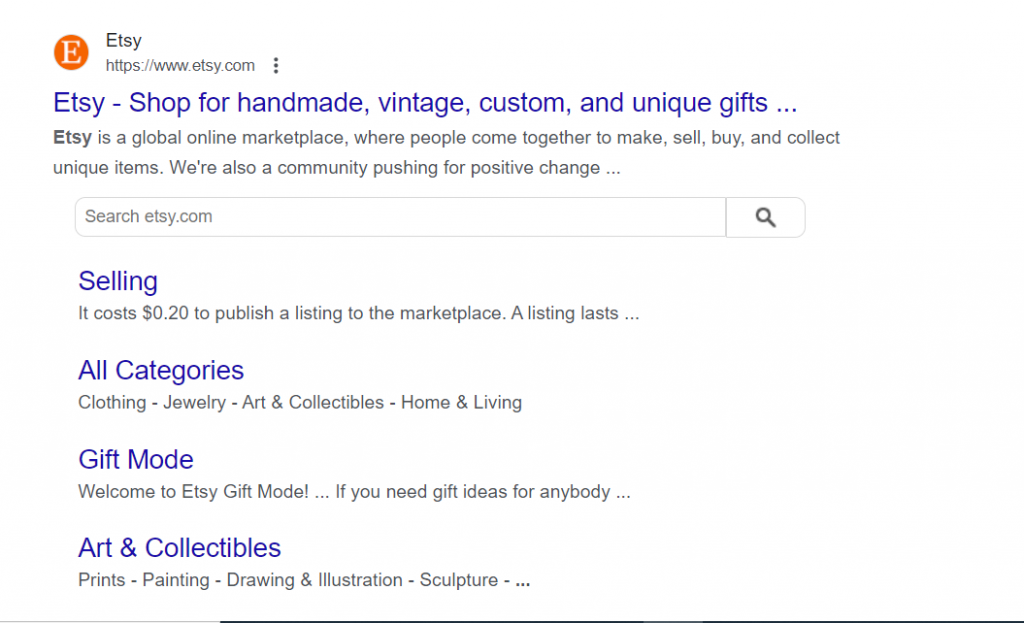SEO Steps for Digital Marketers and Small Businesses to Succeed Online

Source: Pixabay
The current digital era has become competitive, and the need for search engine optimization has increased for businesses of all sizes to adopt it as part of their digital marketing plan.
SEO serves the purpose of creating a brand image and driving sales through high conversion rates. This is achieved when organic customers are routed to websites and the rankings in search engines go up. Even small businesses find it to be an advantageous marketing strategy to market their products with limited budgets.
Although it’s harder than ever to truly hack SEO, as Google has evolved considerably now, there are a few SEO steps or techniques that SEO digital marketing companies and small businesses can use. These techniques help promote small businesses and connect with audiences looking for similar products, surpassing the competitors.
Leverage Long-Tail Keywords
What are SEO keywords? These are phrases people use to find info online. But, when working on your keyword strategy, don’t ignore long-tail keywords, which are a combination of many words and usually have lower search volumes. Still, they target a very specific group of audience, as they have a clearly defined intent. Therefore, targeting them proves more useful, especially for small businesses and marketers.
For new businesses, it’s not always possible to compete with established brands while targeting broad “head” terms. For instance, if you target “cat toys” as your primary keyword because it is one of the top searches on Google, you may fail because the keyword difficulty is equally high.
Long-tail keywords have grown in importance as voice search and conversational AI become mainstream. With more and more searches becoming voice-based, it’s more important than ever to put your emphasis on long-tail keywords.
However, keep in mind that even if you pick the right keywords, you may not be able to rank for it if your website isn’t free from errors. It’s ideal for small businesses to first perform a website audit to evaluate their performance.
A quick website SEO audit can resolve this issue. Depending on the tool you choose, all you have to do is add your URL, which gives you insights into over 120 SEO factors. It can even find issues related to website speed, crawling, redirects, and core web vitals, along with solutions. Be sure to check your site before implementing the long-tail keywords you find.
Optimize for Mobile Devices
SEO marketers believe that SEO is incomplete without optimizing your site for mobile. Statistics show approximately 7 billion global users of smartphones, which explains why mobile optimization is important. Google’s new algorithm also focuses on Mobile-First for ranking sites, which means that if your website is kick-ass but the mobile version is not user-friendly, you can face issues with rankings.
While website design used to be an important factor of success, these days, it’s more about speed and easy navigation on mobile devices. The navigation needs to be simple and friendly, with easy-to-read content divided into points or short paragraphs.
These days, content needs to be optimized based on location searches as well because many people now search “near me”. If digital media specialists ignore mobile optimization, they are giving way to competition, as it is imperative for mobile optimization to be part of digital strategy.
Generate More Leads With Website & Messenger Chatbots
Gather quality leads on autopilot and 10x your ROI with automated chats
Ensure Faster Page Loading
The time it takes to load a page impacts the experience of customers, rankings on Google, and eventually, lead generation and sales. Google has started prioritizing websites that load faster, as they have fewer bounce rates, and businesses must be mindful of their page loading speed to ensure good rankings.
Let’s take a look at page loading times:
- Average Page: 2.5 seconds.
- Top ecommerce platforms in the US: 1.96 seconds.
This shows that in this current digital scenario, even 1 second can impact the sales and success of a business. Those businesses that have made a conscious effort to optimize page speed have seen the difference in conversion rates.
There are certain steps that specialists suggest to take to ensure faster page loads. Compressing images using free tools for image compression, videos, managing fonts, options to cache, and simplifying the coding for Java, CSS, or HTML are some of the steps that can be taken.
You can easily check the performance and determine areas that require updates with tools such as GT Metrix and Google PageSpeed Insights.
Optimize Your Title Tags and Meta Descriptions
The much-evolved Google algorithm is now tuned to prioritize user engagement and intent, but various HTML elements can still have an effect on your CTR and search visibility.
Adding keywords in your page titles and headers may look like a simple tweak, but it helps search engines learn about your page and niche. And the easier you make it for search engines to understand your content, the higher the chances of them ranking your content high in SERPs.
Similarly, you need to have your primary keyword added to your URL slug as well as page headers. Ensure that your primary keyword appears at least once in your meta description as well as the title tag.
While meta descriptions don’t serve as a true ranking factor, they are extremely useful in generating snippets, which improves CTRs. But ensure that your meta descriptions are no longer than 155 characters. Remember, your meta descriptions should serve as a promise to online searchers, clearly explaining what they’re going to get once they click through.
Make the Right Use of Internal Linking
When you have various related articles on your website, it’s important to connect them using internal links. This way, you can transfer authority from one page to another. If you handle them correctly, they’re quite likely to help boost your search engine rankings.
These days, Google is much more prepared to reward sites focusing on the relevance and quality of internal links within the content than mass linking in sidebars, headers, or footers.
This brings us to our next point regarding the importance of placing internal links naturally, which is one of the most important SEO requirements. These links should be scattered in the content in a way that leads to relevant pages, designed to give the user a deeper insight into the topic of their interest. Using a tool or on-page SEO services can simplify the process.
Create Engaging Content
One of the most important SEO tips is to create high-quality content. Modern SEO practices demand engaging content that offers value to users, more so since the March 2024 Core Update and 2023 Helpful Content Update by Google.
The focus of these updates has been on the quality of content in terms of relevancy using the EEAT model that covers Expertise, Experience, Authoritativeness, and Trustworthiness.
Detailed, relevant, and engaging content that offers value and satisfaction to the users is now what Google’s algorithms look for when indexing.
In addition to the written content, these parameters of Google’s algorithms also apply to videos, pictures, gifs, infographics, etc. For example, if your website has a video that keeps the users engaged or an informative infographic, the session time per user is increased, which leads to a high ranking in search engines.
The higher the quality of content, the more chances it has of being liked and shared on social media, often resulting in it becoming viral. Viral content or content that has a higher frequency of shares and comments is deemed valuable by search engines because it often attracts backlinking opportunities and more organic traffic.
Make Use of Schema Markup
Also called structured data, schema markup provides Google with more details about your page. Just like meta tags, schema markup helps Google figure out what your page is about so it can display it to your targeted audience.
The correct use of the schema markup enables Google to provide rich results to your target audience, which is much more useful than regular meta descriptions and page titles. For instance, here’s what schema markup does for Etsy.

Source: Google
Those additional links make it easier for users to find what they need. They can even use the search box to land directly on a page they have been looking for. Moreover, Etsy gets “more” SERP real estate due to rich results.
Therefore, you can always use schema markup to your advantage, especially for reviews, business information, site links, and more. And if it feels tricky, free tools like Structured Data Markup Helper are there to help.
Focus on Image Optimization
While smaller images don’t look good on your site, larger image files can negatively impact your page speed. A slow website won’t take you anywhere, as Google despises it for offering a poor user experience.
It’s in your best interest to compress images properly before you upload them to your website. Thankfully, various image resizing tools are now available – Optimizilla and TinyPNG are a couple of good options.
Similarly, you can try other techniques such as responsive sizing, automatic compression, and the use of newer image formats, such as WebP, for smaller sizes. Since Google now utilizes advanced machine learning for image recognition, it’s vital to optimize image file names, captions, and alt text with descriptive keywords.
Improve User Experience (UX)
Whether you talk about on-page or off-page optimization, user experience always matters.
It is the responsibility of digital media experts and small businesses to provide authentic, memorable experiences to users so that the algorithms can pick up on content authenticity. One of the main factors of user experience these days is a mobile-friendly approach, and experts must focus greatly on mobile UX optimization.
The Core Web Vitals in 2021 and updated in 2024 have prioritized user experience as a parameter for indexing sites. These UX parameters include page load speed, visual relevancy, and content interactivity. Many surveys highlight that even small changes in the user experience are appreciated and lead to higher conversion rates.
Voice search and talking to personal chatbots or Voice AI agents are also a parameter of customer experience because many users rely on voice searches to find what they need.
This means that even voice searches need to be optimized for languages and accents, as well as the ability to understand long-tail keywords. This is the next phase in the evolution of SEO and therefore, websites must make provisions to enhance the user experience for voice searches as well.
Monitor, Analyze, and Adapt
While using different hacks can help small businesses improve their rankings, not everything is going to work at first. On-page and off-page SEO can become tricky at times. It highlights the importance of monitoring your performance and making data-driven decisions to get better results.
Sometimes, you think you’ve used an off-page SEO technique correctly, but many problems can affect your search rankings and traffic. These include sitemap issues, slow page speed, broken links, duplicate content, web pages that Google fails to index or crawl, and so on.
You need a site audit tool to identify and fix these issues. Many paid tools are available, but you can always get started with Google Analytics and Google Search Console. These tools help you monitor your site’s performance, customer experience, keyword rankings, traffic patterns, CTRs, and much more. Just be sure to check those stats regularly and track important metrics to ensure your SEO hacks are working well.
Conclusion
It may look intimidating to employ various SEO techniques to boost your rankings, but it’s not, especially when you focus on these hacks. And it gets easier when you’re ready to use SEO tools designed to do the heavy lifting. Just bear in mind that you should never take SEO as a one-and-done thing. Be prepared to monitor your performance and tweak your strategy to yield impressive results.
Are You Ready To SkyRocket Your Business With Our AI Chatbots
Click The Button Below And Gather Quality Leads With Botsify

